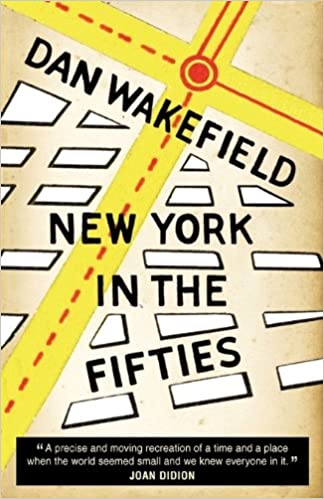
Photograph Source: John Ramspott – CC BY 2.0
As the Supreme Court decides whether to strike down Rose v. Wade, I remembered what life was like when abortion was illegal. I wrote about the nightmare experience the outlawing of abortion causes, especially for unmarried young women in New York City in the 1950s. I lived there during that decade and wrote about it my memoir, New York in the Fifties, which I quote from here.
The Doctor Hero of Ivy League Women
‘All abortion was illegal then,’ Meg Greenfield says, [Greenfield became editorial page editor of the Washington Post] and that engendered a whole lot of anxiety. It wasn’t about coat hangers, but it had a lot of imponderables and danger and fear of the law and of infection and fear of pain, and they didn’t like to give anesthesia.’
Women I knew experienced horrors at the hands of illegal abortionists who were not MDs, people who, as Newsweek put it, ‘practiced furtively in dingy walk-ups and sleazy hotel rooms,’ charging as much as $1,500 for ‘hastily performed and often botched services.’ One woman I knew who had an abortion in a hotel room on lower Fifth Avenue was shoved out the door when she started to bleed profusely.  She fainted on the sidewalk, was helped by a passerby who got her into a cab, and after getting back to her apartment called a friend who helped her to a hospital. Now that she had been injured and her life was in danger, she could legally receive medical treatment.
She fainted on the sidewalk, was helped by a passerby who got her into a cab, and after getting back to her apartment called a friend who helped her to a hospital. Now that she had been injured and her life was in danger, she could legally receive medical treatment.
Such stories abounded, true stories of physical and psychic damage, and sometimes death. A grapevine of rumors, warnings, and advice gave out phone numbers and addresses that were sometimes reliable, sometimes not. A highly touted ‘clinic’ in Puerto Rico might turn out to be a back-room tenement in old San Juan; a retired doctor in Passaic, New Jersey, could be a twenty-year-old Romanian immigrant who barely spoke English; a nurse who let her patients sleep in a quiet bedroom in her Vermont cottage had left the place three days before.
The best hope was a doctor in the small town of Ashland in the drab coal region of eastern Pennsylvania, where there really was a building that served as a clinic with overnight facilities run by a kindly, efficiently M. D. named Robert Douglas Spencer, who usually charged $50 and never more than $100 for the operation. Patients received an anesthetic before Spencer did a D and C (dilation and curettage), then were given 600,000 units of penicillin to protect against infection, and a day’s rest in bed. The facts of Spencer’s underground career were reported by Newsweek when he died at age seventy-nine in February 1969, a legend to the thirty thousand women who had come to him over the years.
Spencer was trusted and admired by the townspeople because he had come there after World War I as a pathologist in the miners’ hospital and risked his own safety to go down shafts for them after accidents. They protected him even though he was breaking a state law in performing abortions. Still, there were times he had to temporarily shut down his clinic, and cryptic messages were sent to the hapless women who had planned to come to that safe haven, saying the doctor would not be able to see them, he would be unavailable until further notice.
In an anonymous paper describing his cases that was read by a sociologist at a conference on abortion, Spencer said most of the women he saw in the early years of his practice were married, but since the World War II ‘fully half’ his patients had been single women in their late teens and early twenties. One in ten were referred by a college guidance counselor or psychologist, most others by women who had gone to his clinic and told their friends that there was at least this one safe place, this one good doctor who would take you in when all the others shut you out.
A young woman went during one of those winters to the small town in Pennsylvania to see Dr. Spencer, and spent the night–as many young women before and after her must have done–in a room in an old hotel, reading a Gideon Bible, and talking on the phone to the man who had made her pregnant. The woman, who grew up Hettie Cohen in Brooklyn, describes in her memoir, How I Became Hettie Jones (wife of the poet LeRoi Jones), how she stood at the side of the road the next afternoon, ‘still a bit drugged,’ waiting for the bus that would take her back to New York, when a car came by, slowed down, and a man shouted, ‘Oh, you must have been a bad girl!’